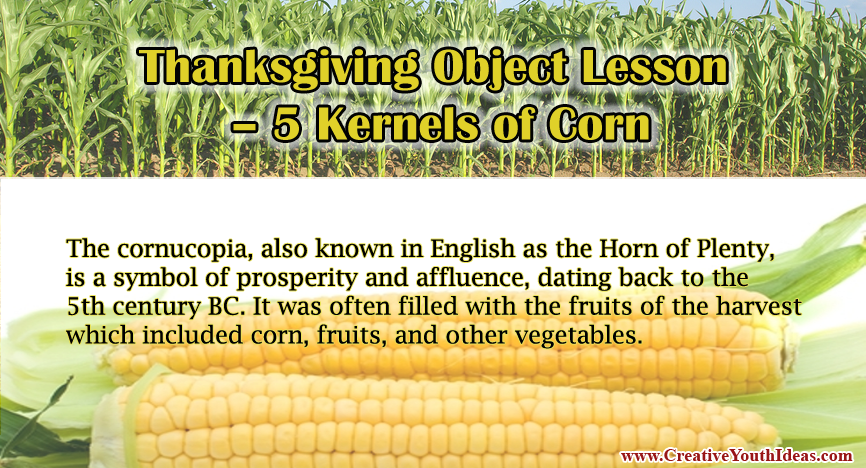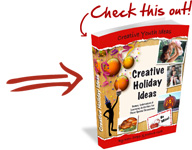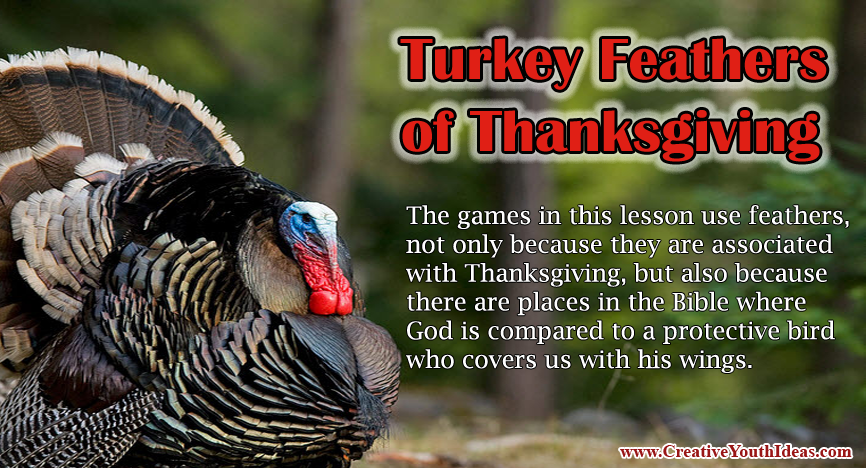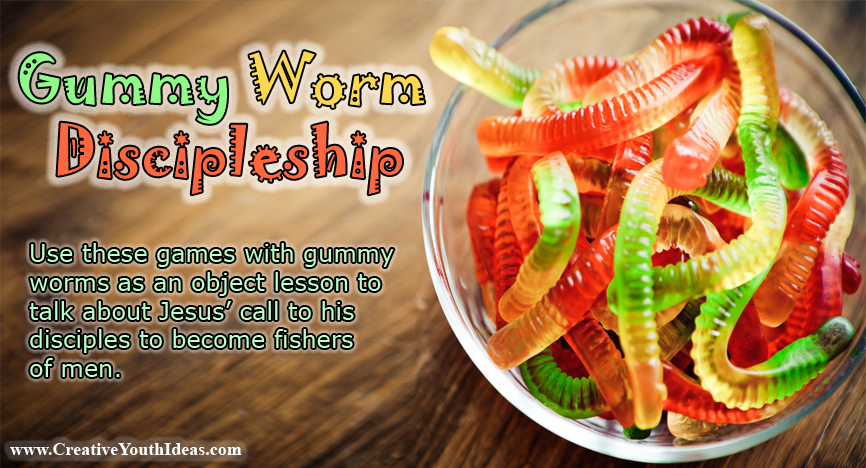
The new year is often represented by a new born baby because a baby represents a fresh beginning. Jesus described Salvation to Nicodemus in John 3 as being “born” again. Both physically and spiritually, we begin as babies. But we don’t stay as babies – we must grow. The Bible tells us to “grow in grace in the knowledge of our Lord and Saviour Jesus Christ” (II Peter 3:18).
PLEASE SHARE THIS IDEA ON FACEBOOK – CLICK HERE
Baby Games
- Baby Bottle Guzzlers – The first to drain a baby bottle filled with soda and then burp wins. (You might want to enlarge the hole in the nipples.)
- Baby Bottle Knockover – Get a pair of old pantie hose and put a potato in the stocking and let it slide to the foot of one of the legs. Tie the other leg around the youth’s head. You’ll need one for each team. Place a baby bottle on the floor for each team. First person to knock the baby bottle over with the potato in the stocking wins.
- Baby Food Roulette – Label several gross baby food flavors with numbers stuck on with a piece of tape then play a game of hot potato with a plastic spoon. When the music stops, the person holding the spoon picks a number and must eat a big spoon of baby food from the jar of baby food with that number on it and the person is out of the game. Rearrange the numbers so youth don’t know what they are getting for the next round and repeat. Continue until there is only one person left in the game.
- Baby Items in the Bag – Put at least ten common baby items inside a diaper bag: a bib, cotton buds, cotton balls, baby powder, teething ring, rattle, bottle, baby brish, baby lotion, baby shampoo, diaper, wet wipes, diaper pin, sock, onesie, and baby blanket are just a few ideas that are also fairly inexpensive. Give each youth a pen and paper before passing the diaper bag around. Without looking, each youth should stick a hand inside the diaper bag and try to identify as many items as possible. Give each youth 60 seconds to make their guesses before moving the bag to the next person. Once everyone has had a turn, whoever has the most correct answers wins. (Variation: put them on a tray and cover it. Uncover it for 60 seconds then cover it back up before they youth are allowed to write down the contents of the tray.)
- Baby Relay – A person from each team must put on the diaper, tuck the bib in the shirt, place their thumb in their mouth, and waddle to the other end of the room (or if outside, a designated place) where they will get on their hands and knees (like a crawling baby) and have a fellow team member squirt a bit of water from the baby bottle into the mouth of the baby. The baby then returns and the next person repeats the same tasks. First team to have all members go through the tasks wins.
- Baby Sketch Artists – Each youth is given a paper plate and a marker. With the paper plate no top of her or his head, each person draws a picture of a baby. Best sketch wins.
- Baby Stroller F1 Race – You need at least one baby stroller and a doll to put inside. You might also want a stopwatch. Use cones, flags, are anything else to mark out a race course. Representatives from each team will have a turn at racing the stroller through the race course as fast as possible. Add penalty seconds for hitting any object, for the baby falling out of the stroller,or other infractions of your rules. Fastest time wins.
- Blind Diaper Relay – Give each team a baby doll, and a blindfold. First person in line dons the blindfold, takes off the current disposable diaper, and replaces it with another diaper. when finished, the baby, extra diaper, and blindfold is passed to the next person on the team. First team to all complete the task wins.
- Bowling Baby Bottles – Arrange 10 baby bottles in a triangle shape, and have each youth “bowl” with a small ball. Highest score wins.
- Diaper Danger – Blindfold a representative from each team who must diaper a blown up balloon with a good amount of baby powder added inside. First person to diaper the balloon to the best of their ability and without popping the balloon with the safety pins wins.
- Diaper Derby – Split the youth into teams and provide each team with a roll of toilet paper. They have five minutes to wrap a team member up in a diaper made of toilet paper. The team with the most creatively diapered ‘baby’ wins.
- Diapers in the Dark – You’ll need several safety pins, a blindfold, and a large doll for each team. You also nned a cloth diaper that fits on the doll. Blindfolded representatives from each team must put the diaper on the “baby.” Quickest and best diapered ‘baby’ wins a prize.
- Dirty Diapers – (Gross game warning) – Place a different types of chocolate candy bar in several newborn-sized diapers (or folded napkins) then microwave each a few seconds until melted. You will want those that are creamy, nutty, caramel-filled, milky, chunky, etc. Pass the diapers around and have each person smell (or taste) the ‘poo’ in the diapers to try and guess which brand of candy bar is in each diaper. The person with the most correct guesses wins.
- Feed The Baby – Give everyone a large bib and a small spoon. In teams of two, the pairs must feed a jar of applesauce to one another at the same time. The fastest pair to finish their applesauce wins. (Messier Variation: Do it with blindfolds)
- Guess the Baby Food – Buy several unique flavors of baby food in jars and number each lid and tear off the labels. Ask each youth to sample each and write down the flavor. The most correct guesses wins.
- Pacifier Pass – Give each youth a straw to place in his or her mouth. Using only the straws to touch it, each team must pass a pacifier to end of the line. First team to the end without dropping it wins. If it is dropped the team must start over.
- Pin Drop – Youth compete to hold diaper pins at nose level and drop them into a baby bottle. The most diaper pins in the bottle after 60 seconds wins.
- Ring Toss – Spread a series of bottle nipples on a flat surface, with several inches between each and labeled with a score based on distance. Youth must stand behind a throw line and try to toss the bottle rings that hold the nipple on a bottle onto a nipple. Highest score wins.
- Siamese Diaper Relay – In teams of two, each pair stands side by side with the center hands behind their backs and quickly and neatly puts a cloth diaper on a baby doll with safety pins. Each person in the pair can only use the outside hand. Quickest and best diapered baby wins.
- Spit the Pacifier – Youth line up and are each given one pacifier to put in his or her mouth. The youth that spits out the pacifier so it lands the farthest away wins.
TAKE IT TO THE NEXT LEVEL
MAKE IT SPIRITUAL
New Christians and new babies have a lot in common. One of the first things a baby learns to do is to drink from a bottle. Soon a baby will learn to feed him/herself. Yet the parent is very careful about what a baby eats. As a matter of fact, a baby will stick almost anything it can find in its mouth thinking it is food. A parent is careful that a baby does live on junk food or place anything in his mouth that might harm him. As Christians, especially as babes in Christ, we need to learn to feed ourselves on God’s Word and avoid those things that are unhealthy or even harmful to us.
- What are some habits and actions you often see in babies and children that would not be acceptable in adults?
- What are some of the marks of maturity as a baby grows into an adult?
MAKE IT PRACTICAL
- Read Hebrews 5:11-6:1. In verse 11, the phrase “slow to learn” could be translated “too lazy to learn.” What are some ways that we are too lazy to learn?
- What might “milk” and “solid food” represent? (See 6:1)
- What differentiates a mature Christian from a spiritual baby (vs 14)?
- What attitudes actions and behavior would you expect from a mature Christian?
MAKE IT PERSONAL
- In what areas have you grown a lot? In what areas is your spiritual growth been stagnant? How would you describe yourself as a Babe in Christ / Child of God?
One way to discover what you eat is to look at the way you spend your time, especially your free time. On another piece of paper, make a list of all the things that you spend your time doing, all your hobbies, all your favorite pastimes? After you have made the list circle any items that are spiritually healthy- health food. Cross out any items that are spiritually harmful or unhealthy – junk food. Leave blank any items which are neutral.
- What does this tell you about your spiritual diet?
- In what ways would you like to grow in the coming year?
- What do you need to have more of in your spiritual diet to grow more mature as a Christian for the next year?
SCRIPTURES
- Psalm 139:15-16 – God planned all your days, all your life, before you were ever even born. He had a plan for you before you even existed.
- Hebrews 5:11-6:1
- II Peter 3:18
PLEASE SHARE THIS IDEA ON FACEBOOK – CLICK HERE
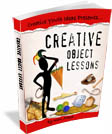 MORE IDEAS? See “Creative Object Lessons”
MORE IDEAS? See “Creative Object Lessons”
200 page e-book that explains everything you need to know when planning your very own object lessons. It contains 90 fully developed object lesson ideas and another 200 object lesson starter ideas based on Biblical idioms and Names / Descriptions of God.
![]()







